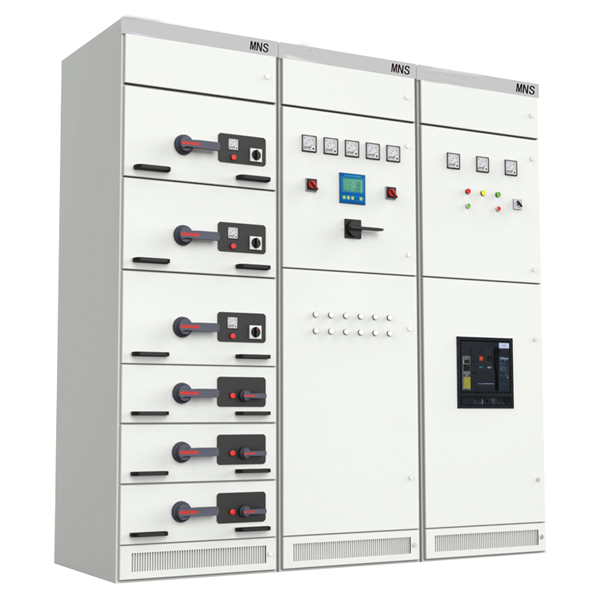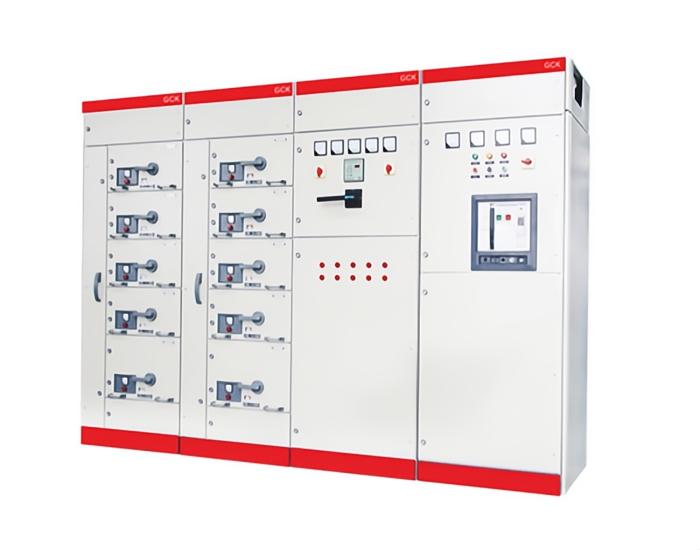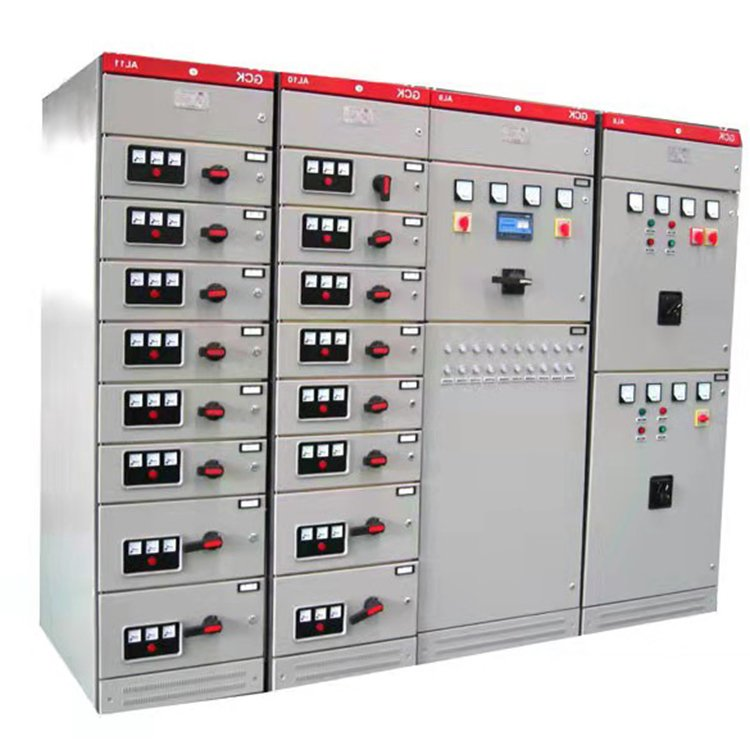
Detailed Technical Overview of Low Voltage Withdrawable Switchgear
1. Introduction
With the advancement of industrial automation and smart grid technologies, the requirements for safety, reliability, and flexibility in power systems continue to grow. As a key device in power distribution systems, low voltage withdrawable switchgear is widely used in industrial, commercial, and infrastructure projects due to its modular design, high maintainability, and reliable performance. This article provides a comprehensive introduction to low voltage withdrawable switchgear, including its definition, structure, technical parameters, features, applications, and maintenance practices.
2. What Is Low Voltage Withdrawable Switchgear?
Low voltage withdrawable switchgear refers to a complete power distribution device used in AC systems with a frequency of 50Hz and a rated voltage not exceeding 1000V, and a rated current of up to 4000A. It is used for power distribution, motor control, reactive power compensation, and centralized load control. Its key characteristic is that its functional units (e.g., circuit breakers, contactors, motor controllers) are designed to be withdrawable, allowing for quick replacement, maintenance, and system upgrades.
This switchgear adopts a modular and standardized design. Its main features include:
-
Modular structure
-
Safe isolation between compartments
-
Withdrawable and interchangeable functional units
-
Flexible operation and easy maintenance
Typical models include: GCK, GCS, and MNS.

3. Main Structure of Low Voltage Withdrawable Switchgear
The switchgear consists of several components, mainly:
1. Cabinet Structure
-
Typically metal-enclosed, fabricated by bending steel sheets and welding or bolting them together;
-
The protection rating is usually IP30 to IP40;
-
Supports front or rear operation, wall-mounted installation is also possible.
2. Drawer Unit (Functional Unit)
-
Each drawer is an independent functional unit for controlling motors or distributing power;
-
Units are available in various modular heights (1/2 unit, 1 unit, 2 units, etc.);
-
The drawer can operate in three positions: “Connected”, “Test”, and “Disconnected”.
3. Busbar System
-
Made of high-strength copper or aluminum;
-
Main busbars are typically installed at the top or rear of the cabinet in a three-phase five-wire configuration (A, B, C, N, PE);
-
Insulating barriers are used to prevent phase-to-phase short circuits or accidental contact.
4. Terminal Area
-
Used for cable connection and exit;
-
Ensures high insulation and reliable protection.
5. Grounding System
-
All metal components are properly grounded;
-
Drawer units are reliably connected to the cabinet’s ground busbar.
4. Types and Common Models
1. GCK Type
-
Developed in China, ideal for Motor Control Centers (MCCs);
-
High modularity, suitable for automated industrial systems;
-
Rear-mounted busbars enhance maintenance safety.
2. GCS Type
-
Jointly developed by China’s power sector and manufacturers;
-
Highly modular and flexible;
-
Ideal for applications with high capacity, numerous circuits, and frequent operations.
3. MNS Type
-
Originally developed by ABB;
-
Based on a 25mm modular grid (E=25mm);
-
Highly interchangeable units and high safety protection level.
-

Switchgear
5. Technical Parameters (Example: MNS)
| Item | Specification |
|---|---|
| Rated working voltage | AC 380V / 400V / 660V |
| Rated frequency | 50Hz / 60Hz |
| Rated current (Main Busbar) | 1000A – 4000A |
| Rated current (Branch Busbar) | ≤1000A |
| Rated short-time withstand current (1s) | 30kA, 50kA |
| Rated peak withstand current | 63kA, 105kA |
| Protection level | IP30 / IP40 / IP54 (optional) |
| Control circuit voltage | AC 220V / DC 110V etc. |
| Modular unit (E) | 25mm |
6. Features and Advantages
1. High Safety
-
Functional units are isolated with metal or flame-retardant partitions;
-
Equipped with mechanical interlocks and anti-misoperation devices;
-
High protection rating to prevent arc flash and accidental contact.
2. Modular Design
-
All drawers are designed based on unified modules;
-
Easy expansion and maintenance;
-
Enhances standardization and compatibility.
3. Easy Drawer Replacement
-
Faulty units can be quickly removed and replaced, minimizing downtime;
-
Three-position mechanism ensures safe operation.
4. High Adaptability
-
Supports a wide range of control applications;
-
Can be equipped with motor starters, soft starters, VFDs, PLCs, etc.
5. Efficient Ventilation
-
Equipped with ventilation holes at the front, rear, or sides;
-
Ensures internal components operate within thermal limits.
-

GCK Low Voltage Withdrawable Switchgear
7. Typical Applications
-
Industrial Plants: steel, cement, automobile, metallurgy, aluminum smelting;
-
Commercial Buildings: offices, shopping malls, high-rise complexes;
-
Energy Sector: wind power, solar power, nuclear power stations;
-
Infrastructure: metro stations, airports, rail stations, power substations;
-
Data Centers: UPS systems and server room power distribution.
8. Installation Guidelines
1. Foundation Preparation
-
Ensure flat and vertical surface before installation;
-
Cabinets are bolted to base channel steel.
2. Grounding System
-
Main grounding bar must be reliably connected to the busbar system;
-
Complies with relevant grounding design standards.
3. Cable Connection
-
Incoming/outgoing cables must be securely fixed and protected;
-
Multistrand wires should be crimped using terminals.
4. Protection and Insulation
-
All fasteners and terminals must be tightened;
-
Bare live parts must be covered or insulated.
9. Operation and Maintenance
1. Routine Inspection
-
Check drawer positions and connections;
-
Monitor indicators, voltmeters, ammeters, etc.;
-
Remove dust and ensure proper ventilation.
2. Periodic Maintenance
-
Inspect all electrical connections quarterly or semi-annually;
-
Perform thermal imaging on busbar joints and breaker contacts;
-
Replace aged components and terminals when necessary.
3. Fault Handling
-
Analyze root cause before resetting tripped units;
-
Withdrawable design allows fast unit replacement, improving system uptime.
10. Development Trends
With the rise of smart distribution and IIoT (Industrial Internet of Things), low voltage withdrawable switchgear is evolving toward:
-
Intelligent Control: Integrated smart breakers and monitoring modules for real-time fault alerts and energy analytics;
-
Advanced Modularity: Further standardization of functional units;
-
Environmental Compliance: Eco-friendly materials meeting RoHS standards;
-
Digital O&M: Real-time status monitoring via cloud/mobile platforms.
11. Conclusion
Low voltage withdrawable switchgear plays a crucial role in modern power distribution systems due to its high safety, scalability, and maintainability. As Industry 4.0 and smart grid initiatives accelerate, its modular and intelligent features will continue to evolve and adapt to new demands. Engineers and end-users should carefully evaluate specific needs and standards during selection, installation, and maintenance to ensure long-term system stability and safety.
